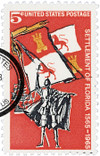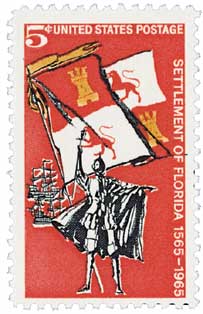
# 1271 - 1965 5c Florida Settlement
5¢ Florida Settlement
City: Augustine, FL
Quantity: 116,900,000
Printed By: Bureau of Engraving and Printing
Printing Method: Giori press
Perforations: 11
Color: Red, yellow and black
Florida Becomes 27th State
Scientists have dated burial mounds found along Florida’s western coast at more than 10,000 years old. There were about 350,000 Native Americans living in the Florida region when the first European explorers arrived. These Indians belonged to five main groups: the Calusa, the Tequesta, the Ais, the Timucua, and the Apalachee.
Spanish conquistador Ponce de León reached Florida in 1513 while searching for the mythical island of Bimini, said to be the site of the Fountain of Youth. Claiming the region for Spain, he named the area ” La Florida”, possibly in honor of Pascua Florida, Spanish for the Easter season. In 1521, León returned to Florida to start a colony, but died from wounds he received in a battle with Indians. Pánfilo de Narváez led an expedition of 400 men to Florida in a quest to find gold, though Narváez and most of his men were killed at sea. Hernando de Soto of Spain arrived in the Tampa Bay area in 1539. He traveled beyond Florida, becoming the first European to reach the Mississippi River.
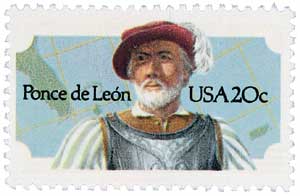
Interestingly, Florida’s first European settlers were not Spanish, but Huguenots (French Protestants). In 1564, the Huguenots established a colony on the St. Johns River, building Fort Caroline near what is now Jacksonville. Spain’s King Philip II sent a force to drive the French from Florida. In 1565, they established the first permanent European settlement at St. Augustine. This group, led by Pedro Menédez de Avilés, massacred the French, ending any further attempts of settlement for a time.
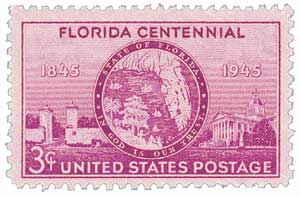
For the next 200 years, the Spanish attempted to teach the American Indians their way of life. France created colonies to the west of Florida, and Great Britain established colonies to the north. War erupted between the French and British colonists during the mid-1700s, and Spain began supporting the French. Great Britain conquered Cuba in 1762, and then traded it to Spain for control of Florida. However, British control of Florida ended during the American Revolutionary War, when Spanish forces invaded in 1781. By 1783, Spain had regained all of Florida.
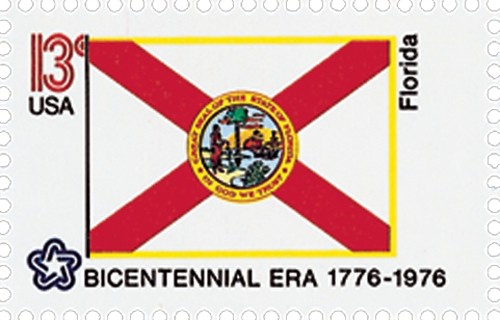
By the 1800s, Florida was the only part of southeastern North America that wasn’t part of the U.S. Many Indians and runaway slaves fled from the U.S. to Florida. In 1812, settlers in Florida declared their independence from Spain, but were defeated militarily.
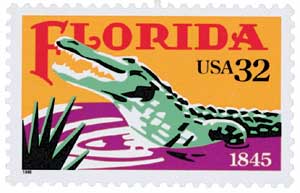
During the War of 1812, fought between the U.S. and Great Britain, Spain allowed Britain to use Pensacola as a naval base. American troops, led by General Andrew Jackson, seized Pensacola in 1814. Jackson entered Florida again during the First Seminole War (1817-18), and captured Fort St. Marks. Jackson also defeated the Seminole Indians. With the Adams-Onís Treaty of 1819, Spain finally turned Florida over to the United States.
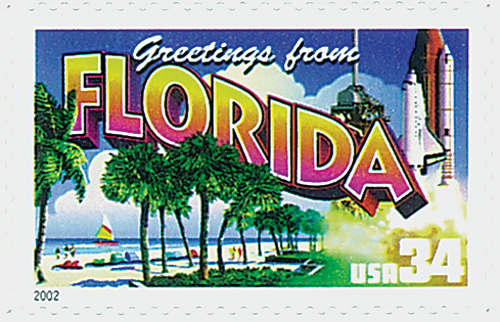
Florida officially became a part of the U.S. in 1821. Jackson served as governor until 1822, when Congress organized the Territory of Florida, with William P. Duval as its first governor. Settlers from the North poured into the state. Soon, conflicts arose between these settlers and the Seminole Indians, who controlled the state’s prime farmland. The U.S. government moved many Seminole to the Indian Territory in the Oklahoma region – but some Indians refused to leave their homeland. During the Second Seminole War (1835-42), most of these Indians were killed. The Third Seminole War (1855-58) resulted in the forced relocation of most of the surviving Indians. However, a few hundred of the Seminole retreated into the swamps.
By 1839, Florida had created a constitution and was ready for statehood. However, the conflicts over slavery (Florida was a slave state) delayed its admission until March 3, 1845.
5¢ Florida Settlement
City: Augustine, FL
Quantity: 116,900,000
Printed By: Bureau of Engraving and Printing
Printing Method: Giori press
Perforations: 11
Color: Red, yellow and black
Florida Becomes 27th State
Scientists have dated burial mounds found along Florida’s western coast at more than 10,000 years old. There were about 350,000 Native Americans living in the Florida region when the first European explorers arrived. These Indians belonged to five main groups: the Calusa, the Tequesta, the Ais, the Timucua, and the Apalachee.
Spanish conquistador Ponce de León reached Florida in 1513 while searching for the mythical island of Bimini, said to be the site of the Fountain of Youth. Claiming the region for Spain, he named the area ” La Florida”, possibly in honor of Pascua Florida, Spanish for the Easter season. In 1521, León returned to Florida to start a colony, but died from wounds he received in a battle with Indians. Pánfilo de Narváez led an expedition of 400 men to Florida in a quest to find gold, though Narváez and most of his men were killed at sea. Hernando de Soto of Spain arrived in the Tampa Bay area in 1539. He traveled beyond Florida, becoming the first European to reach the Mississippi River.

Interestingly, Florida’s first European settlers were not Spanish, but Huguenots (French Protestants). In 1564, the Huguenots established a colony on the St. Johns River, building Fort Caroline near what is now Jacksonville. Spain’s King Philip II sent a force to drive the French from Florida. In 1565, they established the first permanent European settlement at St. Augustine. This group, led by Pedro Menédez de Avilés, massacred the French, ending any further attempts of settlement for a time.

For the next 200 years, the Spanish attempted to teach the American Indians their way of life. France created colonies to the west of Florida, and Great Britain established colonies to the north. War erupted between the French and British colonists during the mid-1700s, and Spain began supporting the French. Great Britain conquered Cuba in 1762, and then traded it to Spain for control of Florida. However, British control of Florida ended during the American Revolutionary War, when Spanish forces invaded in 1781. By 1783, Spain had regained all of Florida.

By the 1800s, Florida was the only part of southeastern North America that wasn’t part of the U.S. Many Indians and runaway slaves fled from the U.S. to Florida. In 1812, settlers in Florida declared their independence from Spain, but were defeated militarily.

During the War of 1812, fought between the U.S. and Great Britain, Spain allowed Britain to use Pensacola as a naval base. American troops, led by General Andrew Jackson, seized Pensacola in 1814. Jackson entered Florida again during the First Seminole War (1817-18), and captured Fort St. Marks. Jackson also defeated the Seminole Indians. With the Adams-Onís Treaty of 1819, Spain finally turned Florida over to the United States.

Florida officially became a part of the U.S. in 1821. Jackson served as governor until 1822, when Congress organized the Territory of Florida, with William P. Duval as its first governor. Settlers from the North poured into the state. Soon, conflicts arose between these settlers and the Seminole Indians, who controlled the state’s prime farmland. The U.S. government moved many Seminole to the Indian Territory in the Oklahoma region – but some Indians refused to leave their homeland. During the Second Seminole War (1835-42), most of these Indians were killed. The Third Seminole War (1855-58) resulted in the forced relocation of most of the surviving Indians. However, a few hundred of the Seminole retreated into the swamps.
By 1839, Florida had created a constitution and was ready for statehood. However, the conflicts over slavery (Florida was a slave state) delayed its admission until March 3, 1845.









